
Self Dislodgment
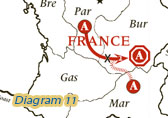
A player can't dislodge or support the dislodgment of one of its own units (even if that dislodgment was unexpected).
The French Army in Paris, supported by its Army in Marseilles can't dislodge its own Army in Burgundy.
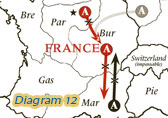
The French Army in Paris, although supported by the German Army in Ruhr, can't dislodge its own Army in Burgundy.
The German Army in Munich is in a standoff with the Austrian Army in Tyrolia.
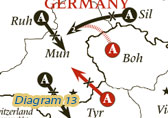
German Armies in Ruhr and Silesia tried to create a standoff with each other in Munich.
But the Austrian Army in Bohemia sneakily gave support to the German unit from Silesia into Munich. But since that would result in Germany dislodging one of its own units, the move fails.
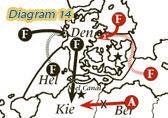
The next example demonstrates a situation in which you might write self-dislodgment orders to create a standoff. This is sometimes a good defensive move.
Russia attacks Denmark from Skagerrak with a support Baltic sea. England counters by creating a standoff (by support attacking Denmark as well).
If Russia would not attack, then the supported attack on Denmark couldn't take place as England can not dislodge his own troops.
Self Standoff
It is allowed to create standoffs by ordering two equally-supported attacks on the same province.
This is often done to maintain control of 3 provinces with only two units.
But when one of the attacks has more support than the other, it will succeed.
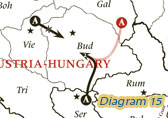
The Austrian player is trying to control Serbia, Budapest and Vienna with two units. Budapest keeps vacant.
But the move "A Serbia-Budapest" succeeds because of unexpected Russian support.
It wouldn't succeed if there was an Austrian Army already in Budapest, since it would be dislodging its own unit.
Cutting Support of your own units
An attack by a country on one of its own units doesn't cut support.
Exchanging Places via a Convoy
Two units can exchange places if either or both are convoyed.
Land and Convoy Routes
When an Army could arrive at its destination either by land or convoy then:
If at least one of the convoying Fleets belongs to the player who controls the Army, then the convoy is used. The land route is disregarded.
if none of the convoying Fleets belongs to the player who controls the Army, then the land route is used.
But the player controlling the Army can still use the convoy route if he or she indicated "via convoy" on the Army move order.
This prevents foreign powers from kidnapping an Army and convoying it against its will.
More than One Convoy Route
An Army convoyed using alternate convoy orders reaches its destination as long as at least one convoy route remains open.
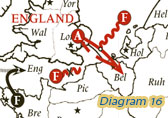
Orders can be written to permit more than one route for convoying an Army from its origin to its destination.
The Army isn't prevented from moving unless all routes in the order are disrupted.
The Army in London has two convoy routes. Since only one was disrupted, the English Army lands in Belgium.
A Convoyed Attack Doesn't Cut Certain Supports
A convoyed Army doesn't cut the support of a unit supporting an attack against one of the Fleets necessary for the Army to convoy.
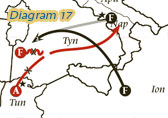
France could argue that its Army cut the support of the Fleet in Naples, this protecting the convoying Fleet from dislodgment.
France could state: "support is cut if the unit giving support is attacked from any province except the one that support is being given".
However, Italy could argue that dislodgment of the Fleet is disrupted the convoy so that the Army couldn't arrive in Naples to cut that support.
Italy could state the rule: "Dislodgment of a fleet in a convoy causes the convoy to fail".
Since both rules are contradictory, the above rule takes place. Therefor, the convoy is blocked and support isn't cut.
Two More Tricky Situations
An Army with at least one successful convoy route will cut the support given by a unit in the destination province that is trying to support an attack on a Fleet in an alternate route of that convoy.
As long as there is one successful convoy route, the landing Army does cut any support given by a unit in the destination province.
(Remember the rule: "Support is cut if the unit giving support is attacked from any province but the one where support is being given").
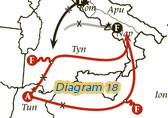
France wrote orders that would take its Army to Naples by either of two routes. (By one Fleet in Tyrrhenian sea and one Fleet in Ionian sea)..
The move from Tunis fails (because of a standoff of the Fleet in Naples), but it cuts the support of that Fleet because that Fleet isn't cutting the successful convoy that came via the Ionian Sea.
Therefore, the Fleet in Rome stands off with the Fleet in the Tyrrhenian Sea.
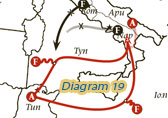
In this case, also an army from Apulia is supporting the attack on Naples.
Now the Fleet in Naples is dislodged and can't support an attack to the Tyrrhenian Sea.
Continue Reading


